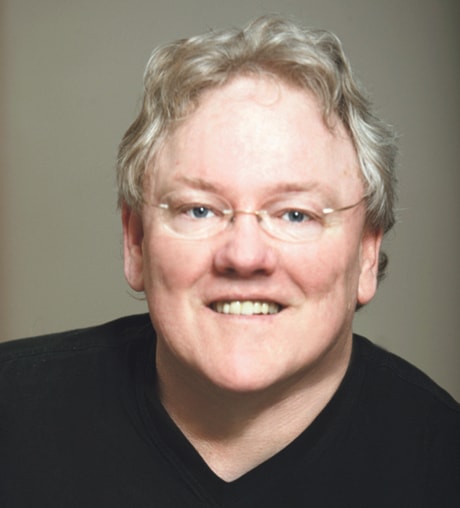Picture this: A giddy group of tween-aged girls, giggling goofiness, all gazing at the same thing. Or this: A bunch of 20-somethings in a noisy bar, gathering around, cheek to jowl, laughing, mugging mercilessly.
Or maybe just this: A 10-year-old plunks herself on Grandma’s lap, drapes her skinny arm around her precious octogenarian and reaches out her hand way out in front of them. A grin as big and bright as Grandma’s blue hair.
In every case, someone has something in their hand. They are holding it out in front of them and everyone is looking at it. But what is it? A winning lottery ticket? If only. A picture of Brad and Angelina? Of course not, but we’re getting warmer.
No, it’s a little box of magic that is already being taken for granted by most of us. What everybody is holding is an amazing picture-making machine known as the point-and-shoot digital camera.
And more importantly, what they are doing with that little camera is creating what I call the DSP or Digital Self Portrait — a universal phenomenon of turning that camera around and taking pictures of ourselves and our friends being happy and/or embarrassingly goofy.
It’s permeating the bits and bites of our very culture, and encouraging all of us to make fools of ourselves on the small screen.
And that has to be a good thing, right?
Ever since the relatively recent advent of the small digital camera, or mini-cam (translated from the Latin — “mini” meaning “not big,” “cam” meaning: “but still costs a lot”), things have changed.
First, photography itself changed. Then people’s behaviour changed. And then the entire world changed.
No longer are we loading up rolls of film and taking one or two tentative and expensive photographs per day per holiday. Way back when, before the digital deluge, my neighbour said once, “What with the price of film and developing and printing, I wouldn’t take more than one snapshot if an alien space ship landed in my back yard!”
I haven’t seen him since.
Remember film? For those young enough to have never known a time without cellphones, film was an ancient invention made out of strips of plastic that was placed inside the camera so that when you took a picture the picture would get stuck on the plastic but could not be seen until you took it to a lab where they would charge you money in order to see what your pictures were.
Early on, you’d trudge that precious roll of film to the local photo outlet, where it would be placed in a special envelope, to be sent away somewhere far far away where presumably, white-coated sorcerer magician slaves would toil 20 hours a day in dank, sweaty bunker-like darkrooms, up their armpits in toxic chemicals, just to make your nice pictures for you.
And then, say, about 12 weeks or so later — voila — you’d trundle back downtown to pickup your precious prints. Some of which may have actually turned out.
Then photography evolved once again — into something called One Hour Photo Service. Public photogs flocked to them like little league soccer teams to a Dairy Queen after the big game.
It was a miracle of the modern age. Now everyone could have their film scratched, lost or printed green in just one hour!
But now the robotic din of all those multitudinous machines and their secret chemicals soaking our images onto strips of plastic and spitting out glossy paper pictures have given way to clunky obsolescence. In a world where even our phones can take pictures, and all the pictures we take are now instant, and they are free — it’s no wonder the DSP phenomenon as become, well, phenomenal.
So now it’s all about digital mug shots. Faces pressed together, squeezing friends into the frame. Girlfriends, boyfriends, families, people at parties, people camping, at school, skipping school. Anywhere, anytime, chances are you’ll find digital self portraits being made. Everybody crowding around the tiny screen to check out their instant image of silliness.
These little point-and-shoot digital cameras have become a means of social interaction — a device to bring people together, to break the ice, to make a memory, to share a laugh, to share a moment and to threaten blackmail.
You just couldn’t do that with the old Kodak Brownie, or the weird little 110 cartridge camera or even a venerable 35-mm SLR.
But in this delightful digital universe, we really are acting differently, and we are literally looking at our selves in new ways — all thanks to the sudden proliferation of marvelous megapixels and magic memory cards.
And you just can’t have too many DSPs. I don’t know about you, but I just can’t get enough of smiling faces.
Now if you’ll excuse me, I have to take a quick DSP of me and my dog. I need to update my Facebook page, and anyway, I haven’t been significantly embarrassed in a day or two, and I can always use a good laugh.
Harley Hay is a local filmmaker and freelance writer. His column appears on Saturdays in the Advocate.
